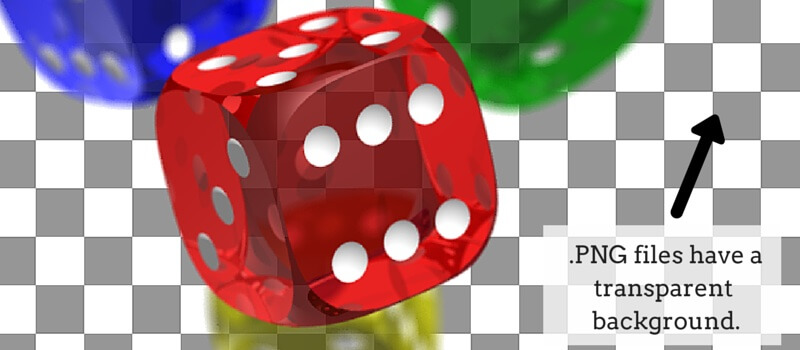Each common graphic design file type is suited for a different use, from printing to computer-based graphics to editable files. Before you choose a file type, you always should consider what that file will be used for.
Not sure what a .PDF, .EPS, or .GIF file is? Check out our post explaining different file types before you read this.
Printing
If you’re planning on printing your file, the first thing you should do is ask your printer what file type they prefer.
When designing for print, make sure you use a CMYK color mode. Check out this post to learn the differences between CMYK and RGB color modes.

Many printers prefer .PDF files because they are easily openable without requiring any specialized or expensive software.
.TIF (.TIFF)
Printers like .TIF files because they are compatible with almost any program. .TIF files are ideal for printing because they are high-resolution images, which means they don’t lose quality in the printing process.
.TIF files also preserve layers and any other special features from your photo editing software. They’re commonly used to print invoices, letterheads, or page layouts.
.EPS
.EPS files are also frequently used for printing because of their high quality. Logos especially are commonly saved as .EPS files because they can be resized for any printed material without losing image quality.
Computer-Based Graphics
If you’re designing for the web, use an RGB color mode.
.JPG, .PNG, and .GIF files are ideal for online use because they are small, compressed files. This allows them to load faster, which impacts your overall site speed. If you’re concerned about search engine optimization (SEO) or want to make sure that your users enjoy their experience on your site, a faster site speed certainly helps.
.JPG (.JPEG)
.JPG images are ideal for web-based designs and emails, but they will lose quality if they are resized.
If you’re designing a .JPG image for the web, use 72 dpi (dots-per-inch). .JPG files are also printer-compatible, but if you’re planning on printing your .JPG, use 300 dpi.
.PNG
Like .JPGs, .PNGs load quickly and are ideal for web use. Unlike .JPGs, .PNG files do not lose their quality when they are compressed.

.PNG files also allow for transparency. If you want to retain full transparency, save your file as a PNG-24. If your .PNG image does not feature any transparent elements, save it as a PNG-8 file. PNG-8 files are smaller and will load faster – no need to increase the load time if you don’t need to!
.GIF
.PNG files were created as an improvement upon .GIF files, but .GIF files are still commonly used across the web.
.GIF files are always reduced to 256 or fewer unique colors, but they are fast-loading and ideal for buttons, charts, banners, and text headings. .GIF files are also commonly used for animations, and should rarely be used for photos. If you are uploading a photo, save it as a .JPG or .PNG file.
Editable Files
Editable file types preserve layers, adjustments, masks, paths, styles, modes, and shapes without compressing the file into a single layer. If you’re creating a design for a client or as part of a team of designers, save your files as an editable file type so they can make changes or additions.
.PSD
Photoshop files are uncompressed, raster-based files that are typically used for web-based designs. Because they are uncompressed, .PSD files are easily editable by clients or other team members.
If your .PSD file is too large to send via email attachment, try using a shared folder such as Google Drive or Dropbox.
.AI
Adobe Illustrator files are vector-based images, which means they can be resized without compromising image quality. Vector files are the easiest file type to manipulate, which allows clients and team members to efficiently make changes to your design.
Information On-Hand
Have this information handy whenever you need it! Click here to download a free printable version of this post.
Sources
Chastain, Sue. “Which Graphics File Format Is Best To Use When?” About Technology.
Nichols, Jessie-Lee. “How And When To Use Different Types of Image Files.” Hubspot. November 14, 2013.



